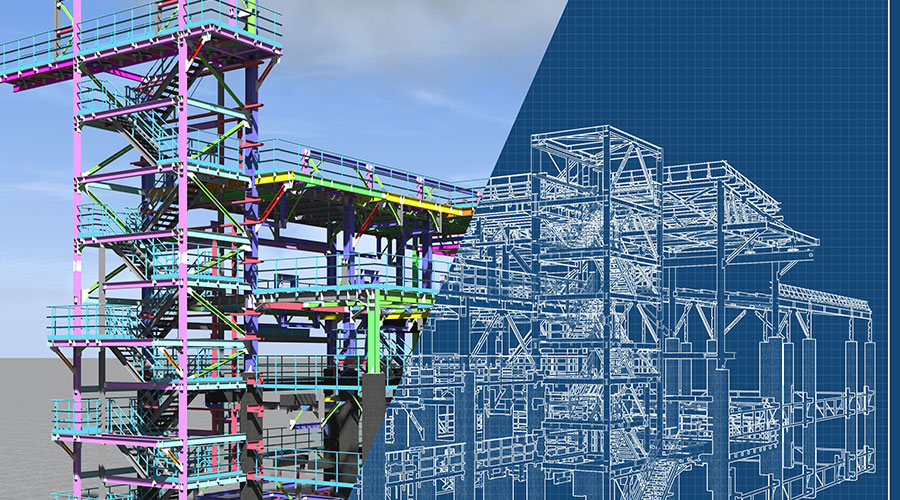CMMS Solution: Build on the Basics
Successfully specifying maintenance management software requires that managers thoroughly understand facility and department needs
Institutional and commercial facilities depend on thousands of assets to keep operations running smoothly. Advances in the technology of computerized maintenance management systems (CMMS) offer maintenance and engineering departments greater power to perform the work needed to help managers, supervisors and front-line technicians achieve this goal.
Properly specified, installed and used, a CMMS can help departments become more efficient in: tracking preventive maintenance (PM) procedures; maintaining data on equipment, schedules, and downtime; providing one point of interaction with operational applications, processes, and people; maximizing limited resources; optimizing performance and maintenance schedules to maximize equipment uptime; and controlling costs by using existing resources more efficiently.
Beyond these benefits, a CMMS can help departments: maintain a complete maintenance history of the repair significant items; monitor stockrooms and inventory levels; track and monitor employee performance; justify manpower; analyze cost distributions and areas in which maintenance dollars are spent; and minimize emergencies by turning the maintenance organization from a reactive to a proactive maintenance philosophy.
Most managers would agree that a CMMS can increase operational efficiency, protect the initial capital investment, and boost productivity. But what they might not realize is the extent to which an effective CMMS is a process rather than a piece of software.
Ideally, this process drives the software, and the software is specified and implemented to fit the process. This process can assist in ensuring facilities remain in a good state of repair.
But implementing a CMMS is not a quick fix for any facilities’s problems. Instead, it can be a long-term solution to managing the health and performance of all facilities.
Beginning the Process
Making sure a CMMS fulfills the needs of all affected parties requires a team effort, involving experts from the field, including consultants; designers; the owner; maintenance and engineering managers; plant operations and maintenance staff; and information technology (IT) managers and technicians.
The team’s goal should be to provide maintenance technicians with a consistent, effective tool to track and schedule PM, identify areas for process improvement, and target better ways to spend maintenance dollars. Pulling together as a team and developing, understanding and committing to a process can provide a good foundation upon which to build a CMMS.
Managers will need to keep a few things to keep in mind when considering purchasing or upgrading a CMMS. Perhaps most importantly, the cost of implementation is greater than the initial cost. Once the software is in place, the department still needs to set it up and populate it with the facilities’ data. This process generally is expensive and time-consuming.
The next step in preparing for the next generation of a CMMS is to determine the specific needs of the organization, its facilities and the department. What areas require the largest and most pressing improvements? To determine needs, consider these steps:
Assess strengths and weaknesses. What are the organization’s IT capabilities? What is the computer literacy of the staff? Can a manager add employees or change maintenance staff’s configuration? Is the staff ready and willing to take a different approach to maintenance and repair operations? Does management believe in the benefits of a CMMS?
Determine the status of maintenance. What is the current status of maintenance in the organization? Is the department properly tracking work being done in the facility? Is there a PM plan in effect? If so, how is it monitored? Answering these questions will go a long way in determining how much up-front time and money must be spent to improve these systems.
Is the department staffed properly? If an organization is implementing a CMMS, chances are it has deferred maintenance due to low staffing levels, a situation that will become a major problem. Is the department prepared to deal with this workload? Does it have the time and money to allocate to this project? This question might be the most important. The successful implementation of a CMMS requires a top-down commitment from management and the support of the entire organization.
Determine the goals and objectives of upgrading the CMMS. Managers need to define these goals before purchase and installation. By setting goals before beginning with the purchase and implementation of a CMMS, managers are clearly defining the conditions of success for the CMMS.
The Implementation Phase
Many managers might not realize the extent to which an effective CMMS is a process, rather than a piece of software. Again, ideally, the process drives the software, and the software is shaped to the process. With this methodology, no two maintenance organizations will have exactly the same CMMS because no two maintenance organizations have exactly the same mission and set of operating conditions. The next phase of this project involves establishing the parameters of the CMMS’s operations — in other words, what should it help the department accomplish?
Start with the end in mind. Define the objectives. What are the desired results of a CMMS? Does it need to optimize equipment life? Is the goal to maximize the uptime of equipment? Whatever the goal, by beginning with a clearly stated objective, the entire organization can focus on achieving this goal throughout the implementation.
Establish achievable goals. Make sure that the goals and objectives are reasonably achievable. It would be great to have a complete PM plan created in a couple of hours, but realistically, this is not going to happen Allowing the implementation team to work toward achievable goals will foster a sense of teamwork and accomplishment once it achieves the objectives. Again, managers need to stress that the implementation of a CMMS is a process, not a quick fix that will solve the facility’s ills immediately.
Establish facility standards. At the heart of any effective CMMS implementation is a set of facility standards. These standards provide guidelines for organizing an enormous amount of data related to infrastructure and equipment.
These standards not only guide the collection and centralization of data critical to facility operation and maintenance. They also set the stage for the important process of issuing monthly performance measures and benchmarking, which ultimately leads to improving the efficiency and productivity of the maintenance department.
These standards should include guidelines for equipment-numbering systems, equipment-list formats, equipment hierarchies, work-order definitions, tool sets, and PM procedures and frequencies.
The ultimate goal of facility standards is to make sure the organization properly maintains its assets to maximize equipment life cycles. Each piece of equipment receives one number. This number helps technicians easily identify the item’s site, building, floor, and equipment type. This type of location-based is essential, particularly for large, multi-site facilities. The number also should include shop designations, work-order types, and cost centers.
Create a PM plan. Managers should determine PM procedures, frequencies and time estimates by using manufacturer recommendations and the recommendations and experience of the facility’s operations personnel. PM procedures should be written in such detail that the department can use them as a training tool. PM tasks should be scheduled to balance a generally equal amount of work for each shop each week of the year.
Establish a maintenance master equipment list (MMEL). Developing a comprehensive PM plan requires an MMEL, which lists equipment, areas and other assets that will be part of the PM plan. An MMEL results from performing a survey of the assets and recording nameplate information and other pertinent information related to each piece of equipment.
Implement a work control center. If the organization does not have a central hub to which the maintenance requests go, CMMS implementation is going to be much more difficult than it needs to be. Establishing a work-control center where everyone in the organization can call for maintenance requests will streamline the work-request and approval process. As a result, the CMMS becomes the tool that managers and supervisors can use to assign work to employees requests come in.
Since facilities depend on their vital assets and equipment to operate smoothly, efficiently, and cost-effectively, managers must take time to create a process and implement a CMMS that works for their facilities’ mission and operating conditions.
Michael Santangelo — msantangelo@gfnet.com — is an applications engineer with Gannett Fleming Inc.
Related Topics:











